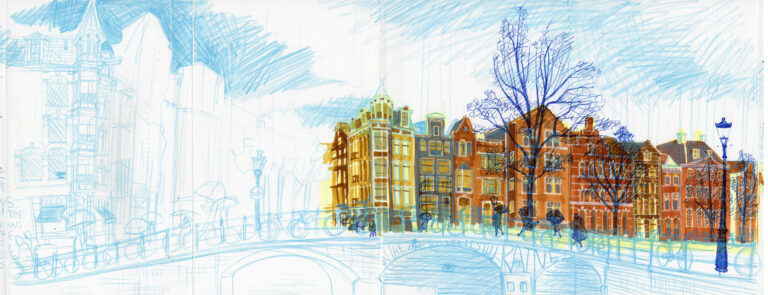Tânia A. Cardoso in Confia 2020 Proceedings (2020)
Hybrid illustrated cities, as the artistic production of an embodied practice in the city, work as intermediates between the concrete physical city and the illustrator’s imagination. This paper presents an autoethnographic reflection on the engagement of the illustrator with the city and the different degrees of word and image dynamics through my artistic practice. Standing apart from traditional illustration, city illustrations are interpretations by illustrators that take urban space as their primary source.
These hybrid illustrations combine elements from illustrated maps, graphic novels, sketchbooks and picture books following loosely the methods of graphic journalism which look for accuracy within the frame of a subjective approach and the limitations of the medium. In other words, these illustrations are personal creations that move between reality and imagination. As such, and following my own artistic practice, I intend to explore the dynamics between word and image in hybrid city illustration to highlight specific elements of the embodied experience of the city, namely the practices of drawing in situ and thinking by drawing. Far from simplifying the depiction of the city, hybrid illustration tends to show complexity and depth through the dynamic between word and image. By addressing the different urban dimensions in this way (architecture, moods, people and stories) in juxtaposed layers the illustrator interweaves those experiences and observations from simultaneous perspectives. Results show that the interdisciplinary context of these hybrid city illustrations may significantly improve the communication of the city and the exchanges between disciplines such as urban studies, architecture and sociology. My artistic practice, presented in this paper, regards the different ways in which the dynamics between word and image alter, enhance, complement or contradict the illustrator’s urban perception and understanding of urban space.
